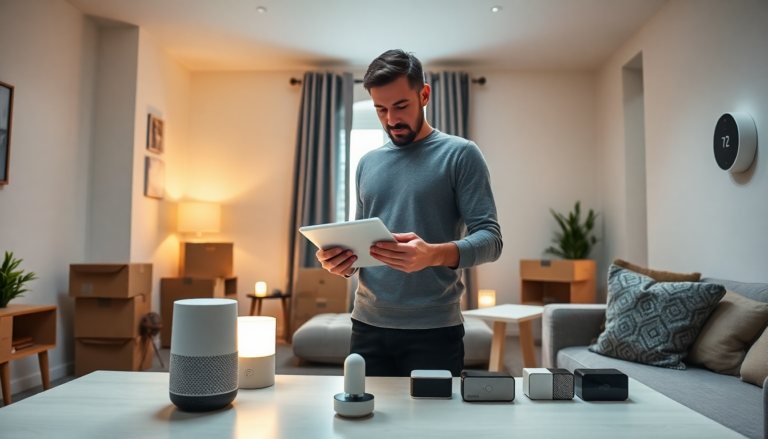Argomenti trattati
Relocating can be quite a challenge, especially when you have a house full of smart gadgets. The integration of technology into our homes adds layers of complexity to an already daunting process. This guide aims to simplify your move by providing practical advice on how to handle your smart home devices, ensuring you make informed decisions about what to keep and what to leave behind.
Assessing your smart home inventory
Before diving into the chaos that is moving, take a moment to assess your smart home inventory. What do you have? Smart locks, thermostats, lights, and sensors are just a few examples of the gadgets that may be scattered throughout your home. It’s crucial to compile a comprehensive list of these devices to avoid leaving behind anything valuable, like that pricey smoke alarm.
Use the main app you typically rely on to manage your gadgets. If you’re feeling old school, a simple spreadsheet can suffice. For those who prefer a more modern approach, consider using a smart home backup app such as HomePass for HomeKit & Matter. This tool allows you to categorize your devices by room and even store vital setup codes. You can attach manuals and other necessary documents for easier setup in your new space.
Deciding what to take
Once you have your inventory, it’s time to decide what to take with you. Devices like smart locks or thermostats might seem essential, but consider whether it’s worth the hassle of uninstalling and reinstalling them. If you plan to take a smart thermostat, swapping it for a non-smart version before showing your home is advisable. New homeowners may not want to inherit your devices, especially if they harbor doubts about their reset status.
It’s common to think that leaving smart accessories behind might add value to your home sale. In reality, new buyers often prefer a clean slate. They might be wary of taking on the potential tech troubles that come with inherited devices. So, if you’ve negotiated to leave behind any gadgets, make it crystal clear that they are being left in their current state. You don’t want to be held responsible for tech issues post-sale.
Preparing devices for the new owner
If you decide to leave behind your smart home devices, preparation is key. Consider creating a dedicated email address for your home and transferring ownership of the devices to that account. This way, new owners can control the gadgets without needing to bother you. Before transferring, ensure you remove any integrations with systems like Apple Home or Amazon Alexa.
When it comes time to reset devices, do so carefully. Each device has specific steps to follow—especially security systems and cameras. Improper resets could leave the new owner with inoperable gadgets or, worse, expose them to security vulnerabilities. Ensure you understand how to properly reset or transfer ownership of each device, checking with manufacturers for detailed instructions.
Moving devices: packing and setup
For the devices you plan to take with you, packing them efficiently is essential. Avoid factory resetting them; instead, just unplug and carefully package them in their original boxes or secure bags. Label each bag with the device name, room, and any other relevant details. This meticulous approach will save you headaches when setting everything up in your new home.
When you arrive at your new place, setting up your Wi-Fi with the same SSID and password as your old home can help your devices reconnect effortlessly. This will make it feel like nothing has changed, easing the transition into your new environment.
Starting fresh or taking it all?
Of course, moving is also an excellent opportunity to reevaluate your smart home setup. Maybe you want to start from scratch and invest in new technology that better suits your new lifestyle. If so, consider what devices you’re leaving behind and what you’ll need to purchase. Each home offers a unique layout and requirements, so think about how your smart tech can enhance your new living space.
The decision to keep or leave behind your gadgets ultimately boils down to personal preference and practicality. With the right planning and foresight, transitioning your smart home can be a seamless process. Whether you take everything with you or opt for a fresh start, ensuring your devices are properly managed will help you settle into your new home without unnecessary stress.

